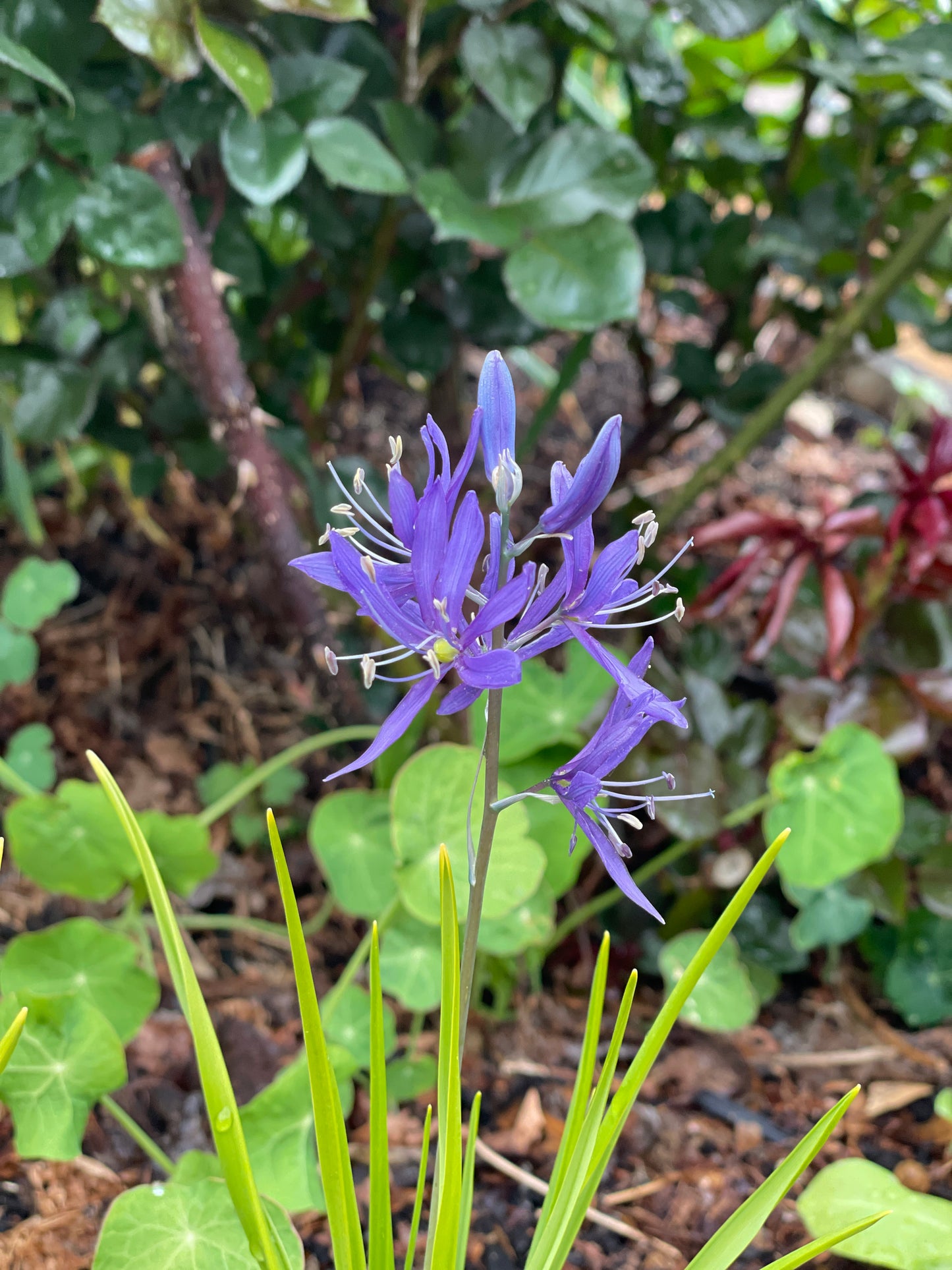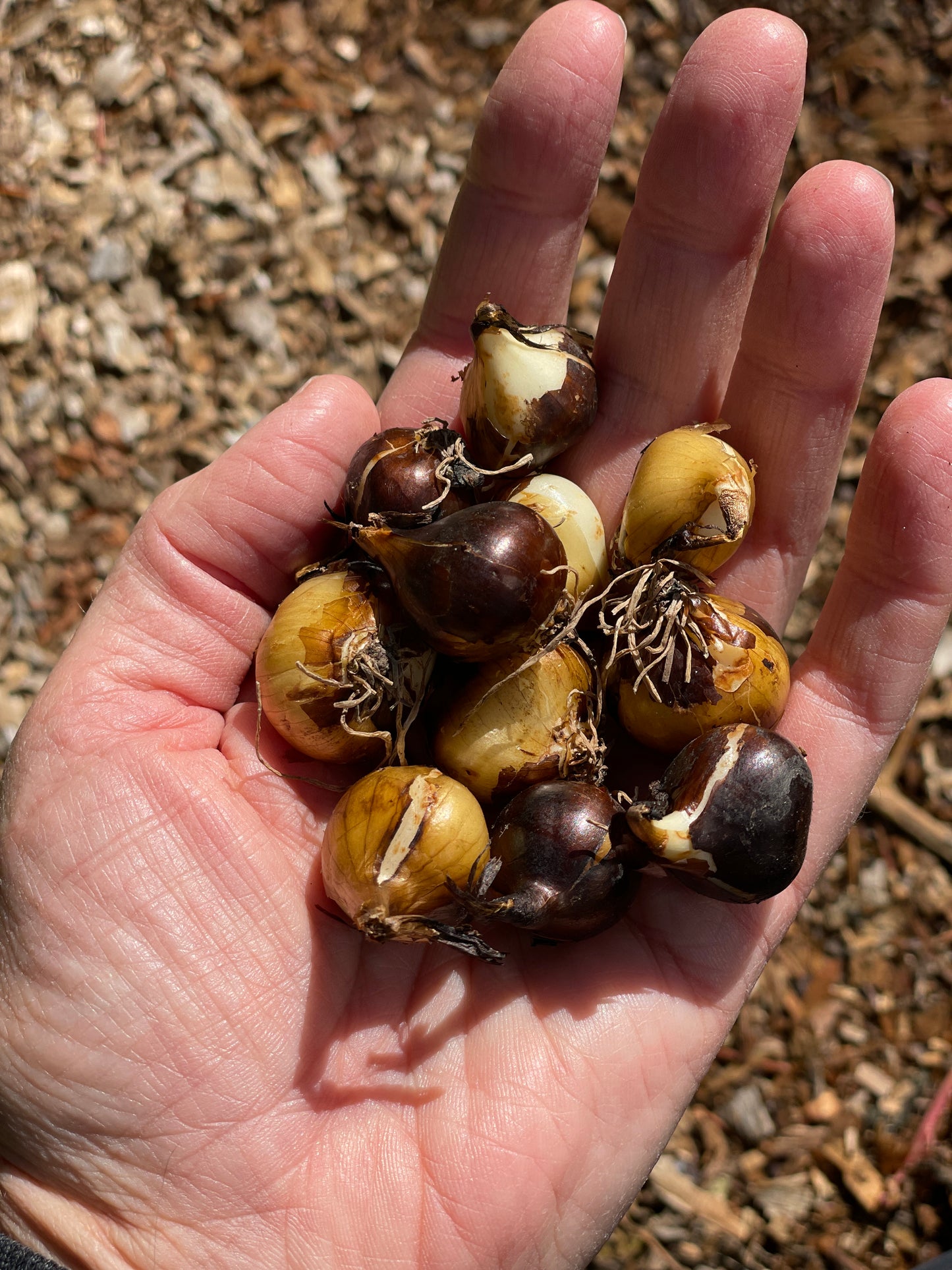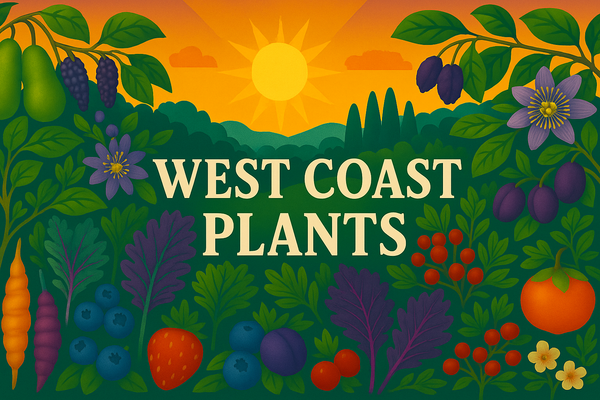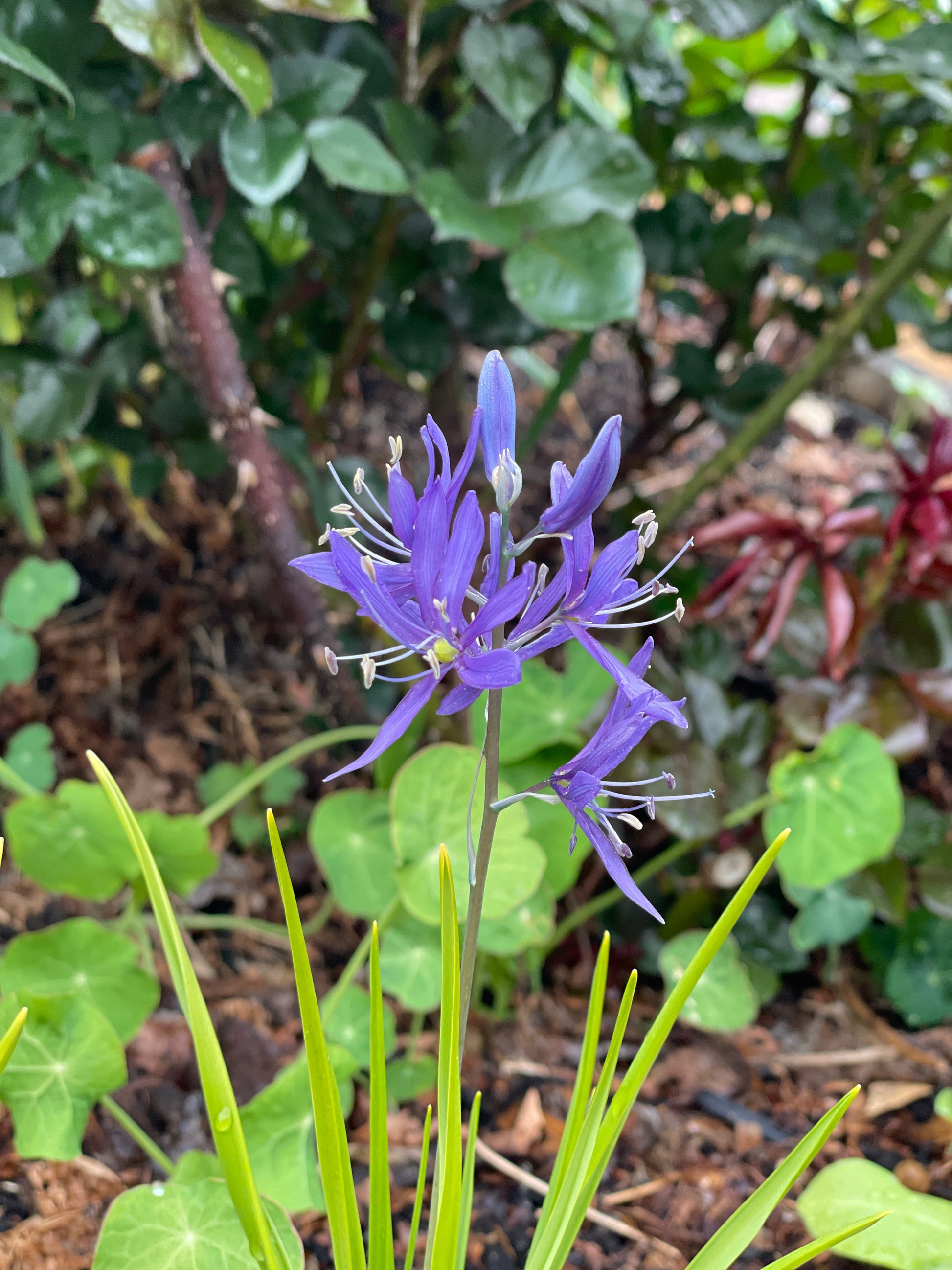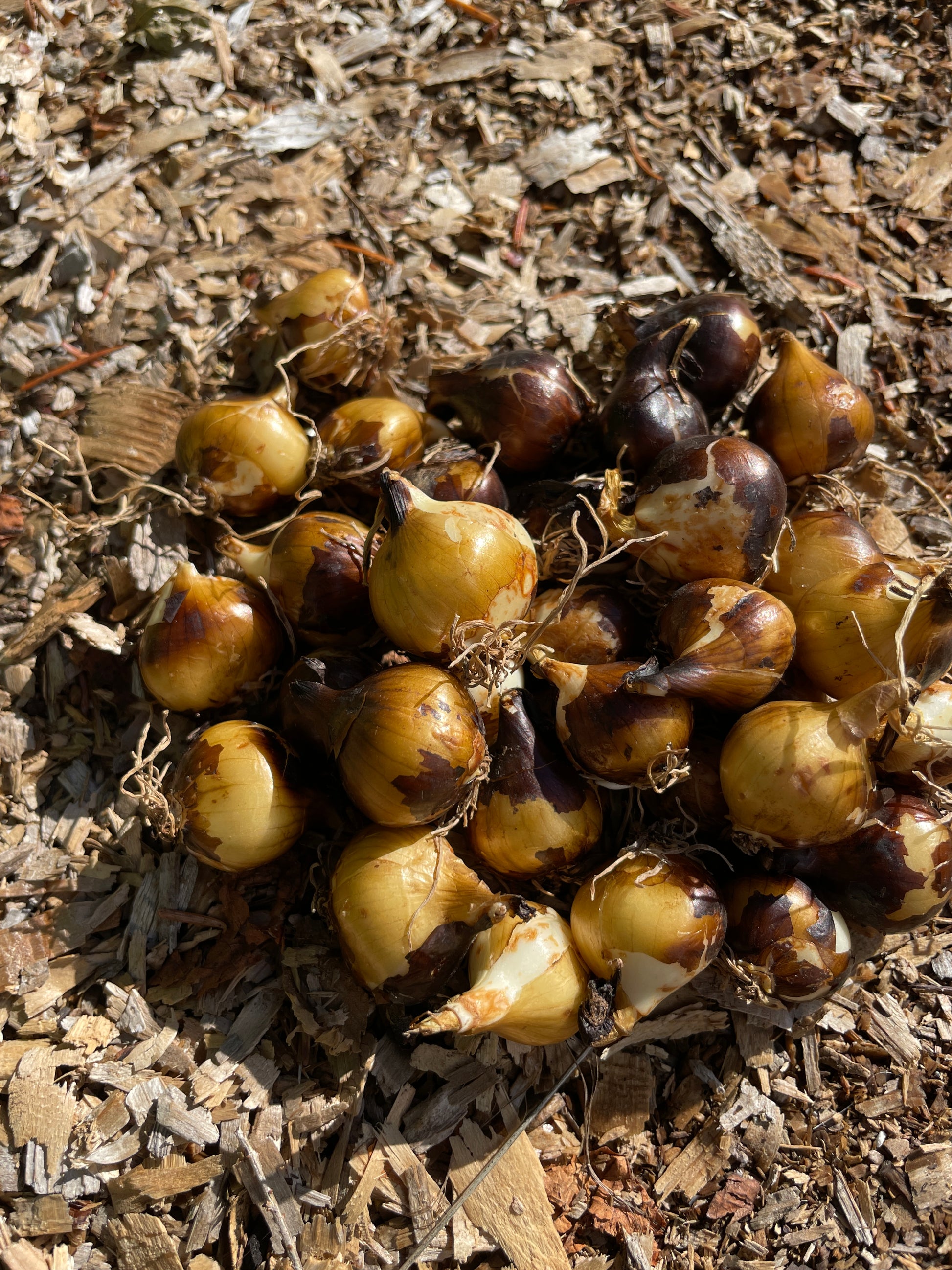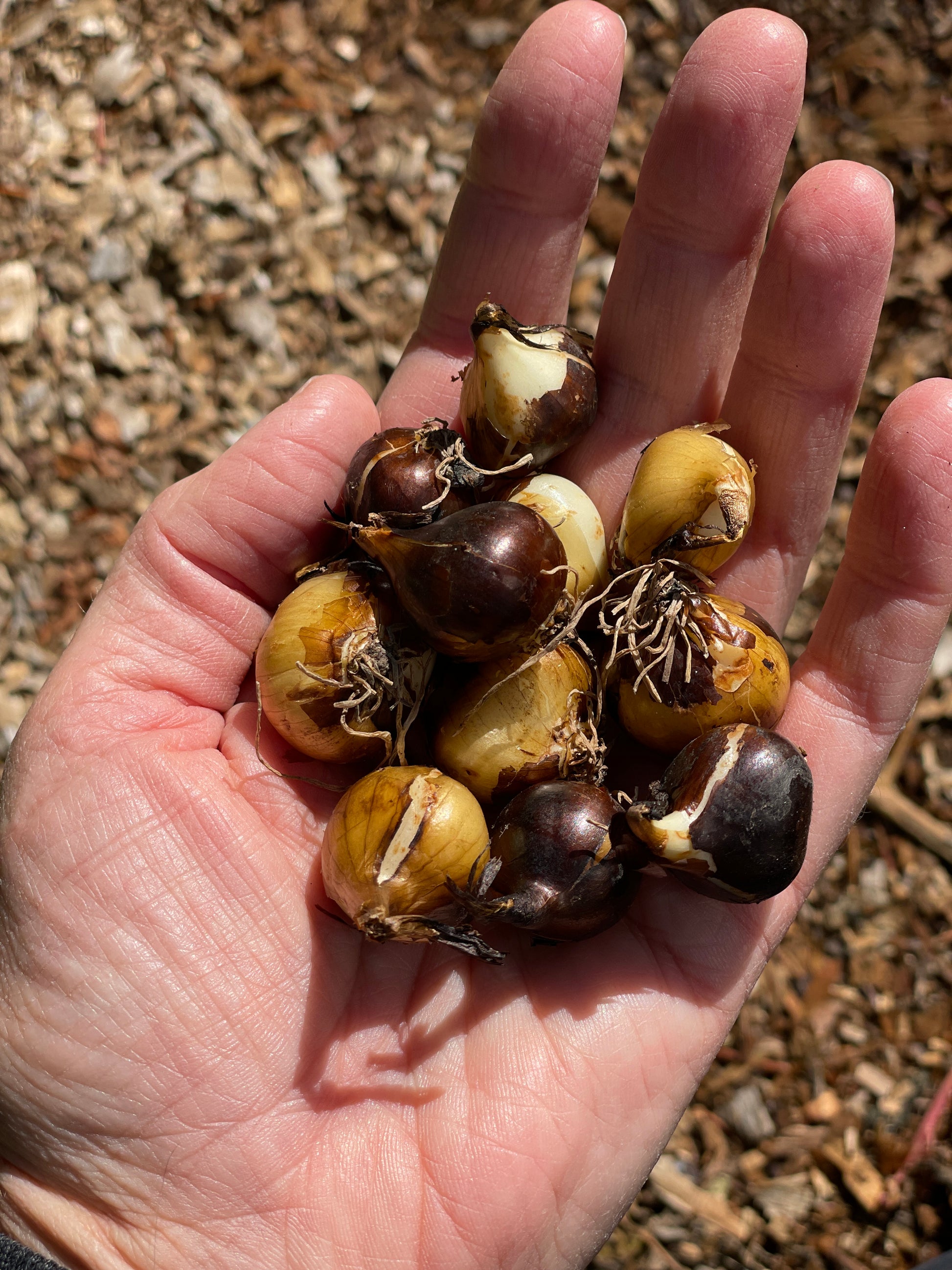West Coast Plants
Common Camas
Common Camas
Couldn't load pickup availability
Common Camas is a spring-flowering bulb, native to the Pacific Northwest, that fills meadows with beautiful blue flowers in the shape of 6-pointed stars.
Beneath the Common Camas flowers lie bulbs with a long history of cultivation and use. Archaeological and ethnobotanical evidence shows that Common Camas has been used and cultivated for at least 4,000–6,000 years in the Pacific Northwest.
For many Indigenous peoples, Common Camas was a staple crop: meadows were carefully tended, harvested, and even burned to maintain productivity. Both Common Camas (Camassia quamash) and Great Camas (Camassia leichtlinii) were a central food source and trade item, valued not only for nourishment but also for their role in gatherings and ceremony.
Common Camas bulbs are not edible raw, but when pit-roasted for 2-3 days they develop a sweet, molasses-like flavour. After roasting, the bulbs were eaten, dried for storage, or shaped into cakes for trade. Pit-roasted Common Camas was used to sweeten other foods and dishes.
Common Camas and Great Camas bulbs must be distinguished from the poisonous Death Camas (Toxicoscordion venenosum), which has white flowers instead of blue. The flowers are no longer present when it's time to harvest bulbs, and the bulbs all look very similar to each other, so growing your own patch of Common Camas ensures a confident harvest.
Common Camas bulbs are not edible raw because they contain inulin, a carbohydrate that causes stomach upset. Though traditionally pit-roasted for several days, they can also be slow-baked or steamed for many hours until the inulin converts to sugars, giving the bulbs their sweet flavour.
Common Camas thrives in moist spring meadows and well-drained soils that dry in summer.
Common names: Common Camas, Small Camas, Quamash
Edible: Bulbs (require long cooking process; do not consume raw or undercooked)
Harvest timing: Traditionally harvested late spring to early summer (May–June), once the flowers have faded and bulbs are mature.
Scientific name: Camassia quamash
Light requirements: Part sun
Full-grown size: 1-2 feet tall
Hardiness: Zone 4
Pollination: Self-fertile for seed production. Bulbs will also multiply underground.
Wildlife: Flowers attract spring pollinators.
Origin: Native to western North America, especially the Pacific Northwest (B.C. to California, and east into the Rocky Mountains).
Noteworthy: Indigenous significance, with thousands of years of cultivation history.
Share
